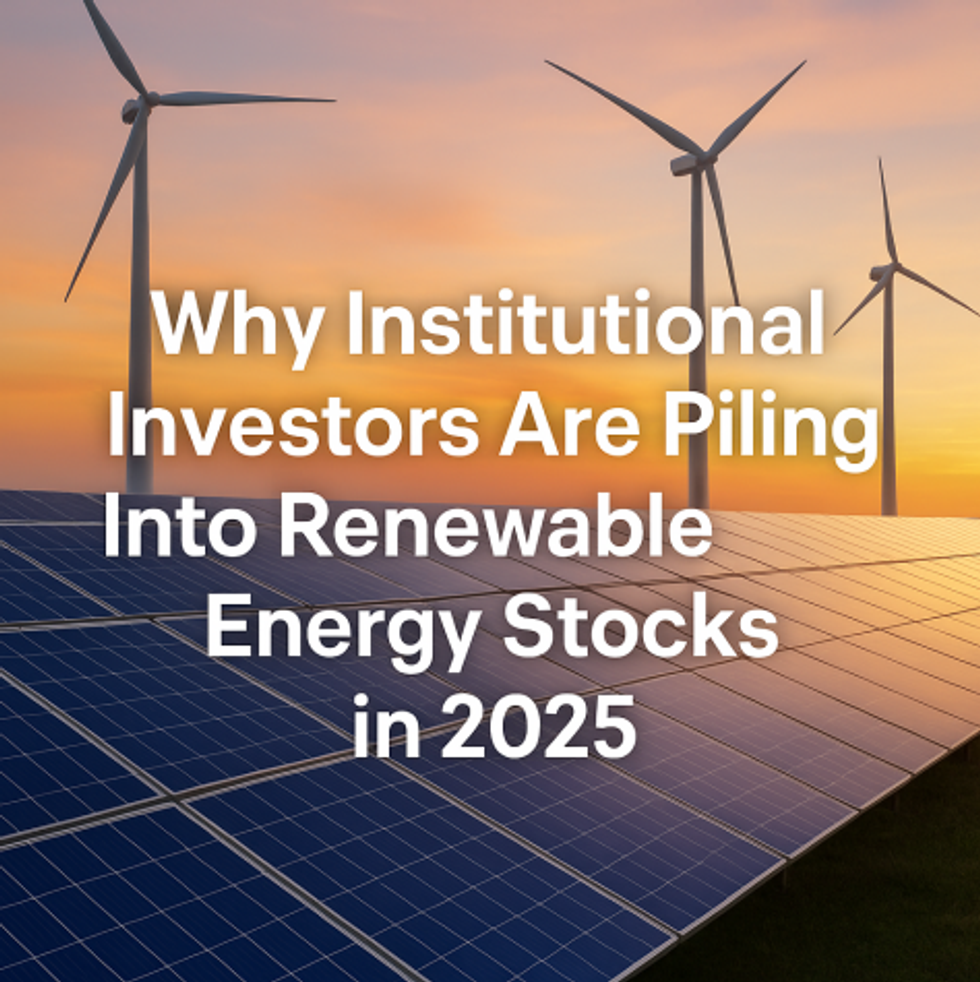Why Institutional Investors Are Piling Into Renewable Energy Stocks in 2025
As we head further into 2025, one sector that continues to capture the attention of Wall Street is renewable energy. Institutional investors—hedge funds, pension funds, and asset managers—are aggressively adding solar and wind energy stocks to their portfolios. For beginners considering their first step into the U.S. stock market, renewable energy offers both long-term growth potential and a clear alignment with global trends in sustainability.

The Growth Drivers Behind Renewable Energy Stocks
Renewable energy is not just a trend; it’s a long-term structural shift. Policies in the U.S. and worldwide continue to support clean energy adoption through subsidies, tax credits, and ambitious climate targets. Solar and wind companies are scaling production, battery technology is becoming cheaper, and energy storage solutions are improving.
This institutional interest signals confidence in renewable energy’s role as a high-growth sector in 2025. Companies like NextEra Energy (NEE) and First Solar (FSLR) are frequently highlighted in analyst reports, making them attractive to both institutions and beginner investors alike.
SEO Keywords: renewable energy stocks 2025, best clean energy stocks to buy, institutional investors renewable energy, solar stocks vs wind stocks.
Are We Seeing a Bubble or Long-Term Opportunity?
Skeptics argue that renewable energy stocks are overhyped, pointing to their sharp run-ups in recent years. However, institutions are not chasing momentum blindly. They are buying because of earnings growth visibility and infrastructure demand.
Unlike speculative bubbles, renewable energy has tangible growth drivers:
- Global electrification is accelerating.
- Corporate ESG commitments are pushing companies to go green.
- Government incentives are boosting solar and wind adoption.
For retail investors, this presents a rare alignment: both Wall Street and Main Street have incentives to push renewable energy forward.
How Beginners Can Join the Renewable Energy Wave
If you’re entering the stock market for the first time, investing in renewable energy doesn’t have to be overwhelming. Here are practical steps:
Start by exploring ETFs such as the iShares Global Clean Energy ETF (ICLN), which spreads risk across multiple companies. For those looking at individual stocks, focus on companies with strong balance sheets and proven capacity expansion. And remember—diversification is key. Don’t put all your capital into one stock, no matter how promising it looks.
At Summits West, we specialize in guiding beginners on how to structure a portfolio that balances growth potential with risk management.
SEO Keywords: how to invest in renewable energy, clean energy ETFs for beginners, stock market guide 2025.
External Resources to Stay Updated
To keep up with the renewable energy market:
U.S. Energy Information Administration
Bloomberg Green Energy
IEA Clean Energy Reports
Pairing these resources with professional guidance from Summits West gives you the foundation to make informed decisions.
Conclusion
Institutional investors are sending a clear signal in 2025: renewable energy is no longer just a niche—it’s the future. For beginners and those who want to recover from past losses, this is an opportunity to align with both long-term global trends and short-term institutional flows.
The key is to approach renewable energy investing with patience, diversification, and knowledge. Whether through ETFs or carefully chosen individual stocks, your first steps into the stock market can set you on the path toward financial growth.




